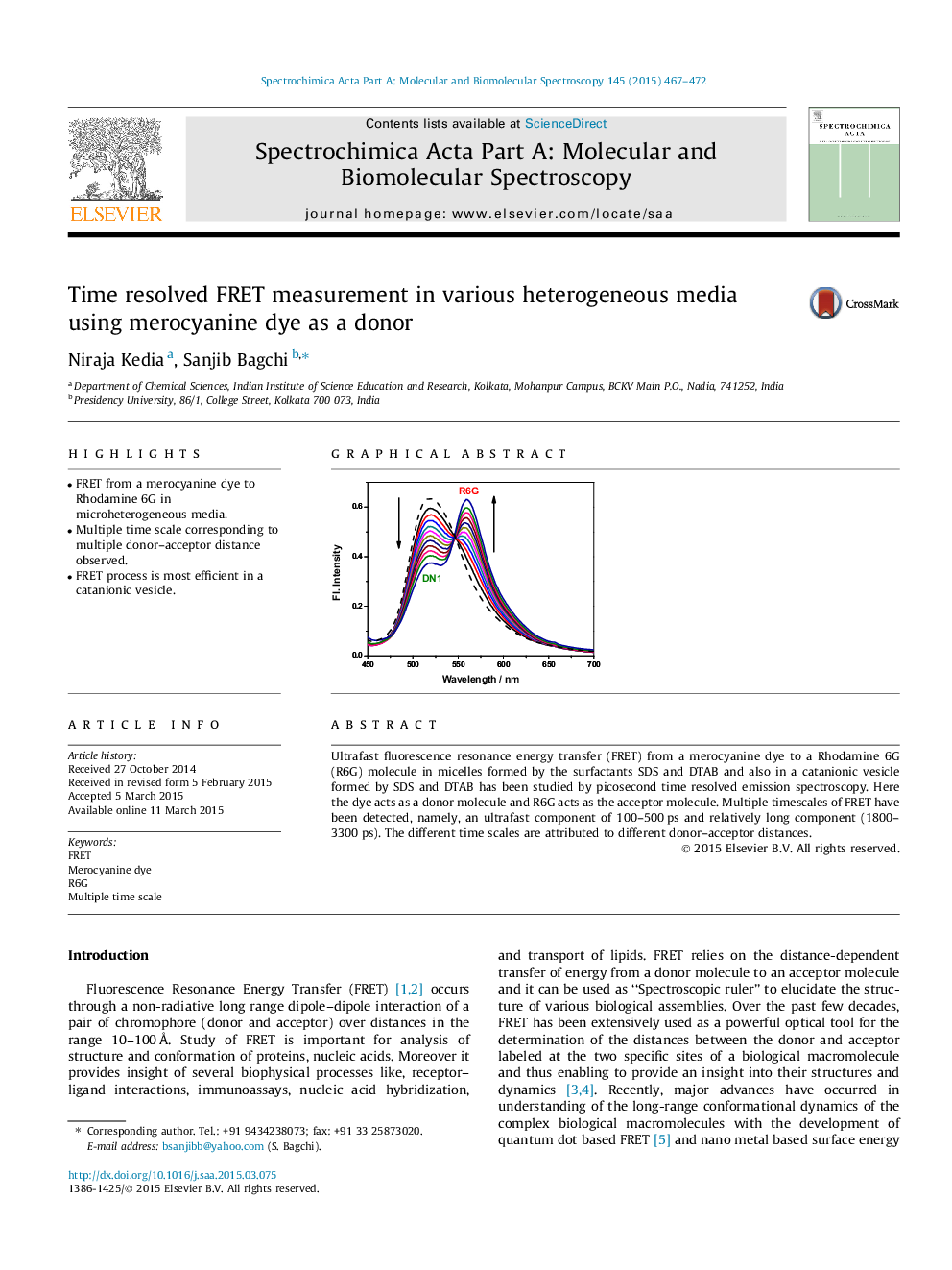| Article ID | Journal | Published Year | Pages | File Type |
|---|---|---|---|---|
| 1229007 | Spectrochimica Acta Part A: Molecular and Biomolecular Spectroscopy | 2015 | 6 Pages |
•FRET from a merocyanine dye to Rhodamine 6G in microheterogeneous media.•Multiple time scale corresponding to multiple donor–acceptor distance observed.•FRET process is most efficient in a catanionic vesicle.
Ultrafast fluorescence resonance energy transfer (FRET) from a merocyanine dye to a Rhodamine 6G (R6G) molecule in micelles formed by the surfactants SDS and DTAB and also in a catanionic vesicle formed by SDS and DTAB has been studied by picosecond time resolved emission spectroscopy. Here the dye acts as a donor molecule and R6G acts as the acceptor molecule. Multiple timescales of FRET have been detected, namely, an ultrafast component of 100–500 ps and relatively long component (1800–3300 ps). The different time scales are attributed to different donor–acceptor distances.
Graphical abstractFigure optionsDownload full-size imageDownload as PowerPoint slide
